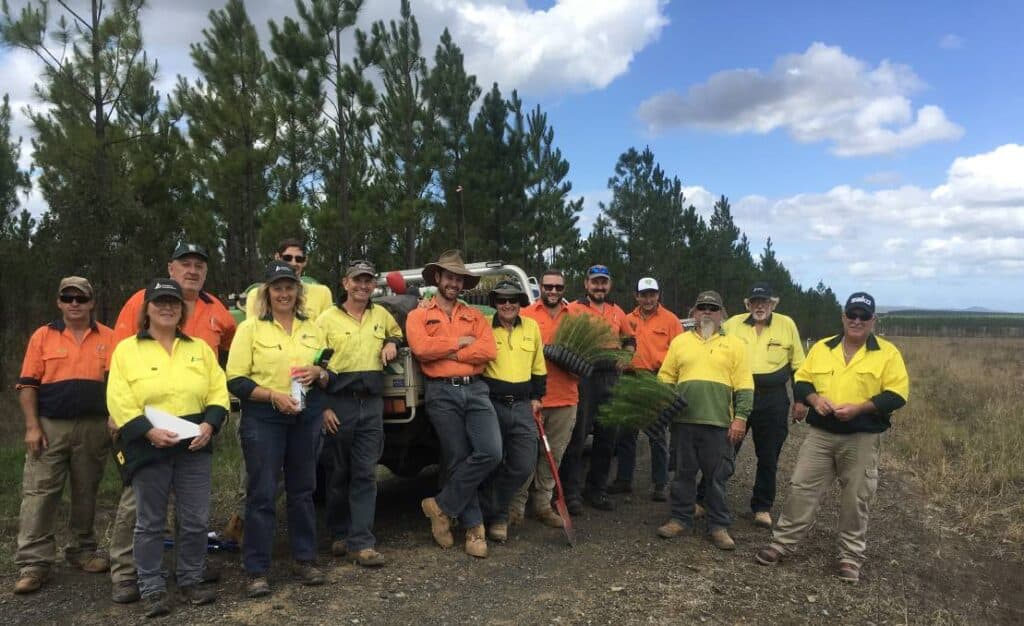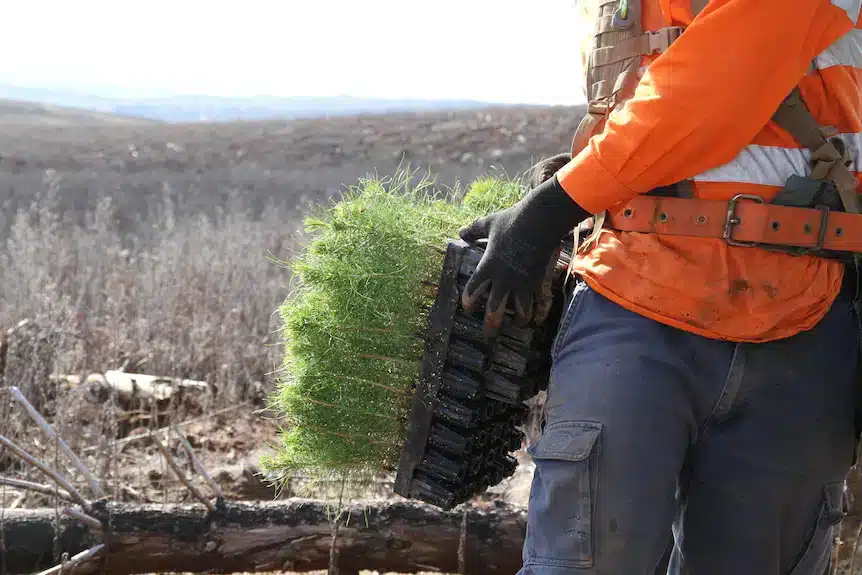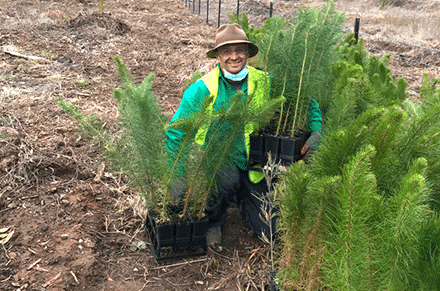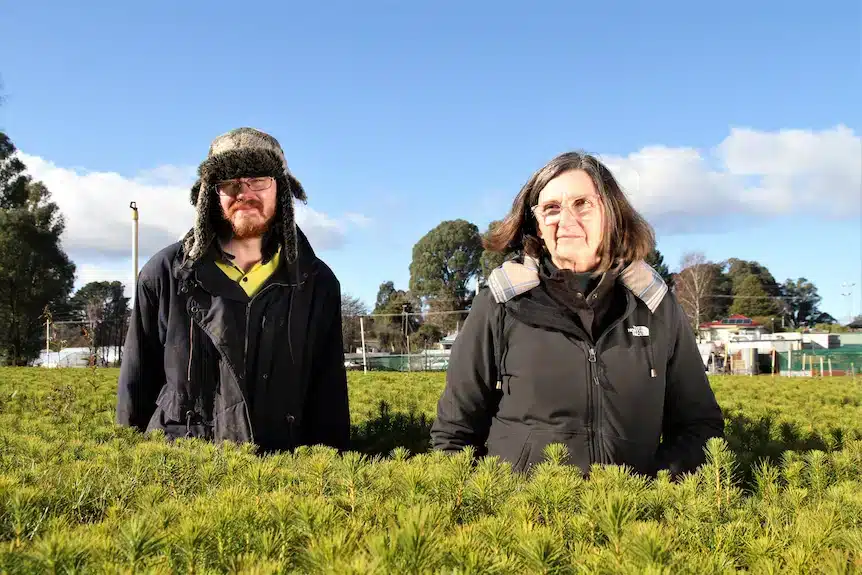The forest recovery continues almost three years after the Australian Black Summer bushfires.
In NSW, where 830,000 hectares of native State forests and 62,000 hectares of plantations were impacted, foresters are busy planting as Australia pushes to meet tree targets.
According to NSW’s Forestry Corporation, which manages environmental sustainability, tourism and renewable timber production in NSW state-owned forests, the fires damaged one-third of the state’s precious plantation resource.

Forestry Corporation has 230,000 hectares of pine plantations and, in an average season, produces enough timber to construct a quarter of the homes built in Australia each year.
Starting in May and running through until late August, they are now running accelerated planting programs, with extensive replanting in Tumit, Bombala, Bathurst, Walcha and Grafton underway.
Tumit in Focus
The Tumut region in southern New South Wales is home to Australia’s largest timber plantation.
With over 90,000 hectares of forest plantations, it is home to 40% of NSW’s plantation estate.
Tumit Silviculture Manager Roger Davies says, “More than 120 people are busy planting 5.6 million seedlings across 5,500 hectares of forest.”
In an average season, ABC reports that Tumit crews are expected to plant 3 million seedlings, with the accelerated programme representing a substantial increase over past years.

According to Mr Davis, Forestry Corporation planted two-thirds of the area impacted by the fires in 2020, with 24 million trees replanted over the past three years.
Now it’s a waiting game, with a 13-year wait before fibre can be extracted from the plantations for pulp and 25 years before trees can be harvested for structural timber.
“As this season shows, we are tracking well ahead of schedule in replanting those bushfire-affected plantations,” he said.

Grafton in Focus
In Grafton, Silviculture Manager Ivan Gorman said more than four million pine seedlings had been planted with the help of highly productive planting crews.
“Approximately 25 people have been planting about a million seedlings across almost 900 hectares of land here at Grafton over six weeks this winter,” Mr Gorman said.
“We have replanted approximately 4000 hectares of the area impacted by the bushfires in 2020, and four million trees have been replanted in Grafton over the past four planting seasons.
“We are getting excellent results from recent plantings,” Mr Gorman said.
“It has been a bumper couple of years in tree survival and seedling growth in wetter than average conditions.”

According to Mr Gorman, each seedling is ‘planted by hand’, with experienced planters planting 1,500 to 3,500 seedlings daily.
“From the pine trees that have been planted this season, it will take around 15 years before we can extract fibre and 28 years growth to obtain structural timber,” Mr Gorman said.
Where infrastructure damaged by fire is replaced or rebuilt, one of the challenges with forestry and other tree groups is that plantations take decades to recover fully.
“With that said, a world-class salvage operation happened in the softwood plantations following those fires, and now it’s been a case of setting the forests up for future harvests,” Mr Gorman said.
Nursery production is booming
This is the fourth year of fire recovery planting, with the phase to continue until 2026.
The accelerated planting has increased production at local nurseries that supply the seedlings.
Last year, the ABC spoke to Sue-Ellen Roberts and husband Tom, who grow radiata pine seedlings in Batlow, New South Wales.

Mrs Roberts told ABC they had already doubled production to keep up with the replanting efforts.
“We were lucky that we had the old Batlow cannery site, which was burnt down in the fires and was just a vacant lot in the centre of town,” Mrs Roberts said.
“We were able to fill it up with the pines and increase our production.”
The couple secured the facility thanks to a 50/50 funding grant with the NSW Department of Primary Industries, “which helped a great deal.”
“We purchased a seeding line, extra trays, and infrastructure to double production.”
In 2020, Batlow was devastated by the Black Summer bushfires, with 330,000 hectares of land burnt and about 20 homes lost.
Mrs Roberts said they were lucky to have kept the nursery with the help of the watering system.
“The fire surrounded the nursery, and we only lost a few on the edges,” she said.
“An interesting part was the pines stopped growing for four weeks with the intense smoke in the area.”






